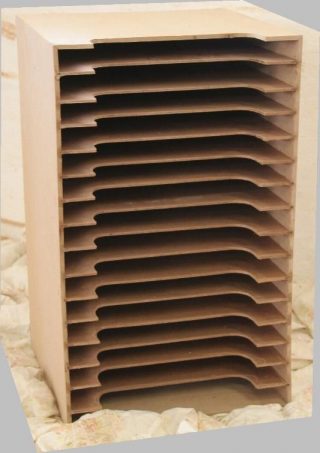
Tips On Storing Wood
Wood is undoubtedly a valuable and abundant building material, being employed widely in the construction of homes, and also many of items inside them – shelves, doors, tables, chairs, and so on. It is also very common to find wood used in antique items and pieces of craftsmanship. Whilst it has proved the test of time as an excellent construction material, exercise must be cautioned in the storage of wood like most natural materials, – favourable atmospheric conditions, intelligent positioning and the original condition of the wood itself, are all contributing factors to the effectiveness of storing this material.
Wood is a strong fibrous material, so to many people it is a surprising statistic that when still on the tree wood can be over 50% water. Once the timber has been chopped down, the wood will dry out to an extent, and with the lower moisture content the hardness of the wood should increase. This doesn’t mean however that you should encourage untreated wood to be kept in a draught to make it as strong as possible – if wood is too dry it will be more susceptible to cracking, so you need to address a correct moisture balance for the wood. The best advice is to invest in a humidity meter that can brief you on the air moisture levels and if they are too high or low then you will need to address this with a humidifier or dehumidifier to achieve a more balanced air moisture level. Damp and humidity are an issue that you may experience at some point in your storage tenure, so it is worth referring to an article such as this one in order to tackle the issue before it gets out of control.
The rest of the trick is to ensure that the wood is not experiencing any long term forces that will cause cracks or twisting. Ensure that your wooden items are supported properly, and are not holding heavy objects on top of them or inside them for long periods of time.
Most of the time you are going to be storing wood that has already been fashioned into an object and likely to have been treated. However, you may be involved in a building project that involves storage of fresh wood planks. The best advice is not to store for too long, not just to reduce the effects of less than ideal humidity, but also in that new wood can release acetic acid which is corrosive to metals, as are some of the timberyard treatments to protect against mould. If you have metal racking therefore, stainless steel is the way to go. Also, for long planks, ensure that the wood is propped up throughout its length rather than just at the two ends, otherwise it may sag under its own weight over time and be of no use to your building project.
Being aware of the nature of wood and keeping your storage conditions monitored throughout the storage period will ensure that your wooden items are in the same condition when they come out as when they went in.
Posted in: Tips & Ideas


